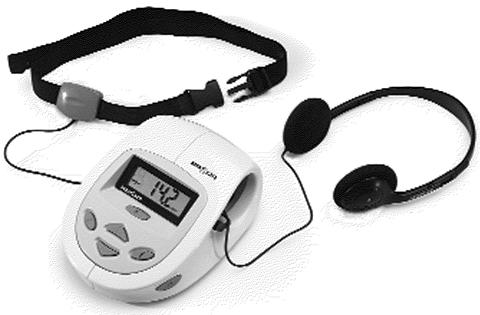 |
The RESPeRATE device is a non-invasive, non-drug therapeutic device to perform breathing exercises as an adjunctive treatment for hypertension. It includes a compact-processing unit, headphones, and a respiration sensor on an elastic belt.
 |
Slow and deep breathing is known to acutely modulate both the cardiovascular and nervous systems. 1,2 The greater lung inflation associated with deep and slow breathing stimulates slowly-adapting pulmonary stretch receptors. This stimulation triggers a reflex loop (baroreflex) that leads to blood pressure reduction. 3,4,5 The sustained blood pressure reductions observed after routine exercises with RESPeRATE™ are analogous to the adaptive blood pressure response achieved through routine aerobic exercises or by using CPAP in obstructive sleep apnea. 6,7
The results of three randomized, controlled clinical studies support the use of RESPeRATE™. 8,9 The studies showed that RESPeRATE™ treatment along with prescribed hypertension medications resulted in a typical reduction of 12 mmHg systolic and 8 mmHg diastolic with just six weeks of daily treatment. Pooled trial data, as well as additional trial data, also have shown that this blood pressure reduction increases both with age and with higher initial blood pressure ( Tables 1 & 2 ). 8,9,10 Use of the device has been shown to lower blood pressure for patients who were taking hypertensive medications as well as for those who were not taking medication to control blood pressure. No side effects or adverse reactions were reported.
|
||||||||||||||||||||||||||||||
|
||||||||||||||||||||
The RESPeRATE device is intended for use as a relaxation treatment for the reduction of stress by leading the user through interactively guided and monitored breathing exercises. The device is indicated for use only as an adjunctive treatment for high blood pressure under the direction of a physician, together with other pharmacological and/or non-pharmacological interventions as prescribed by the physician.
None known.
Do not use RESPeRATE when you need to be alert, or to concentrate, or when using heavy equipment. Do not use RESPeRATE while driving. Breathe naturally throughout the exercise. Excessive deep breathing may cause dizziness and palpitations. This device has not been studied in patients with respiratory disease, diabetes, atrial fibrillation, active ischemic heart disease/unstable angina, congestive heart failure, stroke, chronic renal failure, or major organ failure.
Physicians should write a prescription and fax it to the mail order pharmacy @312-421-5082. Patients should call 877-988-9388 for delivery.
InterCure, Inc.
214 Carnegie Center Suite 300
Princeton, NJ 08540
Direct Inquiries to:
Phone: 609-799-7599
Fax: 609-799-7690
Sales and Ordering:
Customer Support Center
(877) 988-9388